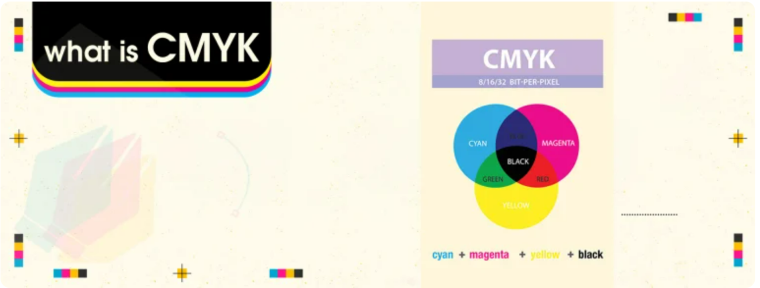What Is DTG Printing: An Ultimate Guide for 2025

If you’ve ever been curious about how independent artists sell shirts featuring detailed designs or how online stores provide endless design choices without keeping inventory, direct-to-garment (DTG) printing is probably the solution.
Check everything about DTG printing in this article: what it is, its benefits, the different types of DTG printers, and tips for how to get started with DTG printing.
What Is DTG Printing
DTG (Direct-to-Garment) printing is a method of printing digital designs directly onto textiles, most commonly cotton t-shirts, hoodies, tote bags, and more. Unlike screen printing, which requires creating a stencil or screen for each color, DTG uses inkjet technology to apply water-based inks directly into the fabric.
Think of it like using an office inkjet printer, but instead of paper, you’re printing on garments.

|
Manage Multiple Stores In One Account Multiple Stores Management - Link and manage multiple stores on different platforms in one place |
The process involves loading the garment onto a platen, pre-treating the fabric (especially if it’s a dark color), and then using a specialized DTG printer to apply the ink. After the printing is completed, the garment undergoes a heat-curing procedure, which ensures that the ink adheres firmly and permanently to the fabric fibers.
This method allows for full-color, highly detailed designs, even complex gradients and photographic images, with no minimum order quantities.
Benefits of DTG Printing
DTG printing has gained traction for its flexibility and because it fills a gap that traditional printing methods like screen printing and heat transfers can’t always meet. Here are the key benefits of DTG in 2025.
No Minimum Orders
This flexibility is a major draw for small businesses, artists, and entrepreneurs alike. Whether you need to print a single shirt as a sample or 50 for an upcoming event, DTG printing makes it possible without incurring significant setup costs.
This accessibility allows for quick adaptations to market demands, making it an ideal choice for creative ventures of all sizes, enabling you to bring your unique ideas to life without a hefty financial commitment.
Full-Color, Complex Designs
With DTG printing, you face no limitations on color options. It supports full-spectrum CMYK printing, allowing you to create intricate, photorealistic images that showcase clean gradients, realistic shadows, and even tiny text details.

This capability empowers you to produce vibrant and detailed designs that stand out, making it an excellent choice for artists and businesses looking to bring their creative visions to life without compromise.
Fast Turnaround
DTG printing dominates the on-demand apparel market with its unparalleled precision and customization capabilities. You can transition from design to finished product in just minutes, which makes it ideal for live selling, print-on-demand platforms, and even personalized gift creation.
This speed and efficiency allow businesses to meet customer demands quickly and effectively, enhancing the overall shopping experience and enabling you to capitalize on trends or special requests with ease.
Soft Feel and High Print Quality
Unlike heat transfers, DTG prints don’t leave a rubbery texture. The ink is absorbed directly into the fabric, resulting in a soft, breathable finish that customers appreciate. This premium feature not only elevates the garment's texture and durability but also prevents long-term wear issues such as flaking or fissures, ensuring lasting quality.
Businesses benefit from this durability, as it leads to higher customer satisfaction and repeat purchases, making DTG an appealing choice for quality-conscious brands.
Eco-Friendly Options
In 2025, many DTG printers will utilize water-based, non-toxic inks, with some even recycling leftover ink. Additionally, DTG operates on a zero-inventory model, allowing you to avoid mass-producing items that may remain unsold.
This approach not only reduces waste but also aligns perfectly with eco-conscious business models, appealing to environmentally aware consumers and helping businesses adopt more sustainable practices while maintaining flexibility in their production processes.
Integration with Print-on-Demand (POD)
DTG printing serves as the backbone of many print-on-demand (POD) platforms, including Printful, Printify, and SPOD. These services allow you to concentrate on creating your designs while they handle the printing and shipping logistics.
This arrangement provides a low-risk opportunity to launch an apparel brand or effectively monetize your artwork, enabling you to reach customers without the burden of inventory management or upfront costs
Types of DTG Printers
If you're considering setting up your own DTG operation—or just want to understand the machinery better—it’s helpful to know the different types of DTG printers and how they compare.

|
Find Better Supplier For Products DSers Supplier Optimizer - One click to filter out the most proper suppliers for your products |
Entry-Level DTG Printers
If you're a beginner, a hobbyist, or running a small shop, entry-level DTG printers are well-suited to your requirements. They are affordable and compact, making them suitable for small-batch printing or side hustles. Low-cost DTG printers empower designers to test creative concepts risk-free, eliminating hefty upfront investments.
Examples:
- Epson SureColor F1070 (2025 release)
- Brother GTXpro B
- Lower upfront cost
- Easier to learn
- Slower print speeds
- Smaller platen sizes
These printers represent a significant upgrade in both speed and print quality, making them ideal for growing businesses or print-on-demand sellers who require the capability to print several dozen items each day efficiently.
Examples:
- Ricoh Ri 2000
- Epson F2100
- Faster
- Better quality
- Durable
- Higher maintenance
- Larger footprint
Industrial DTG Printers
These printers are specifically built for scale, designed to operate continuously throughout the day, printing hundreds of garments with exceptional precision. They are commonly utilized by large-scale print shops, established apparel brands, and fulfillment centers for high-demand production needs.
Examples:
- Kornit Atlas Max
- Aeoon KYO Series
- Ultra-fast
- Massive volume
- Top-tier quality
- Very high cost ($100,000+)
- Requires staff and space
Hybrid DTG Printers
Some of the latest machines integrate DTG (Direct to Garment) with DTF (Direct to Film) or traditional screen printing capabilities, offering enhanced flexibility. These versatile printers are particularly popular in shops that frequently switch between different order types to meet diverse customer demands.
More versatile
Requires more expertise to operate and maintain
Tips for Getting Started with DTG Printing
If you're excited about the possibilities of DTG printing but aren't quite sure where to begin, you're not alone. The good news is that getting started is easier today than it’s ever been. Here are some practical tips and beginner-friendly pathways to help you start strong.
Master Your Design Tools
Before you start printing anything, ensure you're comfortable using design software such as Adobe Illustrator, Photoshop, or any graphic program compatible with DTG printing. The more proficient you become at preparing high-resolution, print-ready artwork, the better your final results will be.
If you're just beginning, consider enrolling in an online course or watching tutorials to build your skills. Remember, strong, well-prepared designs are essential for the success of any DTG product you create.
Play with Color, Texture, and Detail
DTG printing shines with its seamless full-color reproduction, effortlessly capturing intricate designs with photorealistic detail—no screen limits or color restrictions. Don't hesitate to explore your creative side, experiment with gradients, intricate illustrations, photo-based designs, and subtle textures.
Unlike screen printing, which often charges per color and can limit your creative options, DTG allows you to unleash your imagination without constraints. Take full advantage of this flexibility to create stunning, vibrant designs that truly stand out and resonate with your audience.
Choose the Right Fabric
For optimal results, 100% cotton fabrics are ideal—their natural fibers absorb water-based inks deeply, ensuring vibrant, fade-resistant prints that stay bold wash after wash. If you opt to print on blends or synthetic materials, keep in mind that the ink may not bond as well, which can lead to muted or uneven colors.
To avoid issues, always conduct tests on unfamiliar fabric types before committing to a large batch. This precaution can help ensure the quality of your final products.
Invest in Reliable Equipment
If you're in the process of setting up your print studio, the quality of your equipment is crucial. High-quality DTG printers often come with a higher price tag, but they provide sharper details, faster print times, and greater durability over time.
While cheaper machines might initially appear to be a bargain, they typically result in higher costs due to maintenance, wasted materials, and potential customer dissatisfaction. Investing in quality equipment can lead to better outcomes and a more successful printing business.
Always Run Test Prints
Before fulfilling a customer order or printing a new design in bulk, it's essential to run a test print on the exact material you plan to use. This practice allows you to verify color accuracy, alignment, and design size.
A quick test can help you identify any potential issues, saving you from costly mistakes and ensuring that each print meets your quality standards. Taking this extra step can significantly enhance customer satisfaction and maintain your brand's reputation for excellence.
Prioritize Printer Maintenance
Routine maintenance is crucial for keeping your DTG printer in top condition and preventing issues such as ink clogs, inconsistent prints, or unexpected downtime. Regularly clean your print heads, store ink properly, and adhere to the manufacturer's maintenance schedule.
By taking care of your equipment, you ensure consistent, professional-quality output day after day. This proactive approach not only prolongs the life of your printer but also enhances the quality of your prints, ultimately benefiting your business and customers.
Final Thought
The custom apparel market is only getting bigger, and DTG printing remains at the heart of it. With unmatched flexibility, eco-friendly practices, and beautiful print quality, DTG is empowering creators, influencers, and brands to launch personalized merchandise with little risk.
From Etsy startups to streetwear brands and merchandise expansions, DTG empowers entrepreneurs with limitless customization, turning ideas into wearable art with minimal setup. And thanks to improved technology, it’s more accessible, affordable, and scalable than ever before.
In 2025, the future of fashion is personal, and DTG printing is how you make it happen.









 Company
Company
 Why Choose DSers
Why Choose DSers
 Blog
Blog
 Help Center
Help Center




 Live Chat
Live Chat